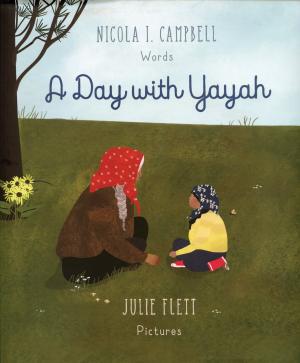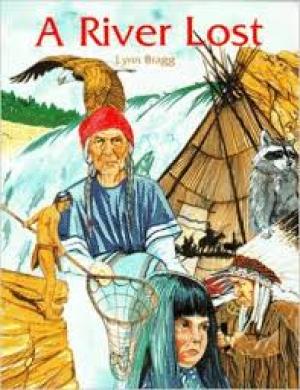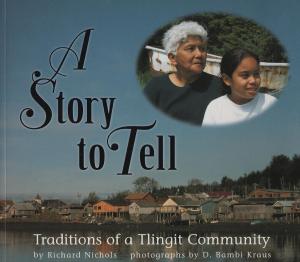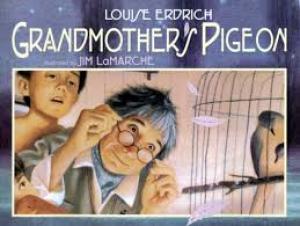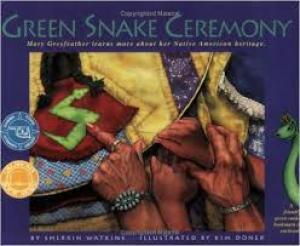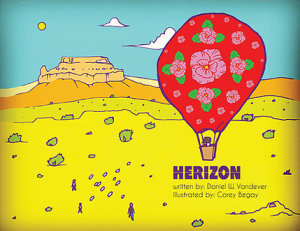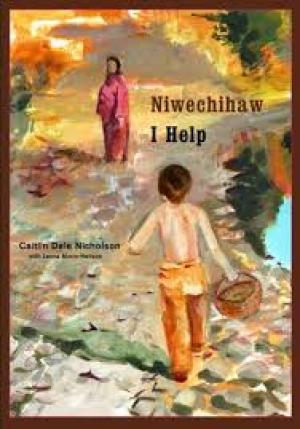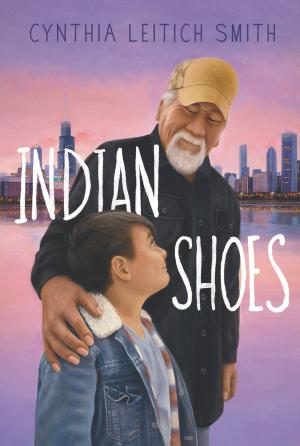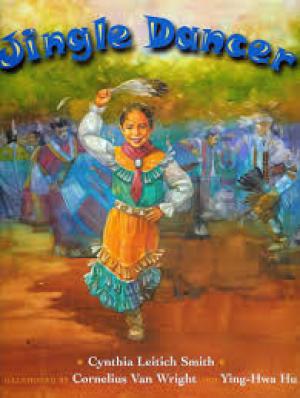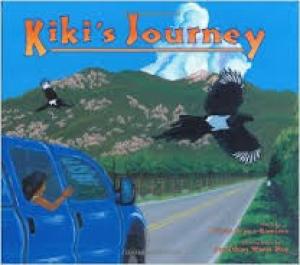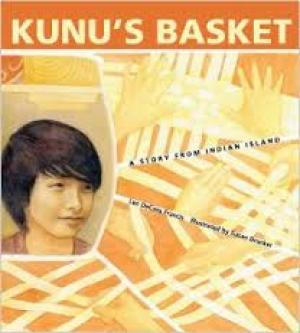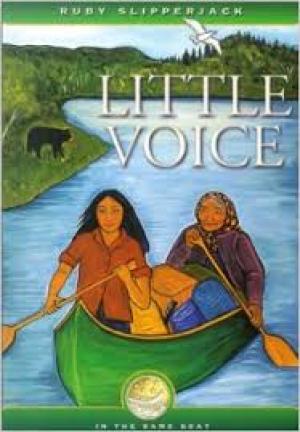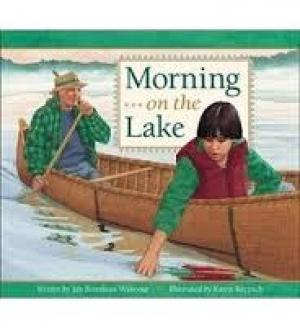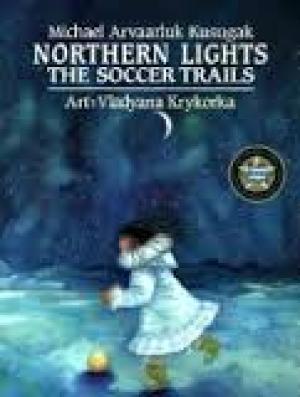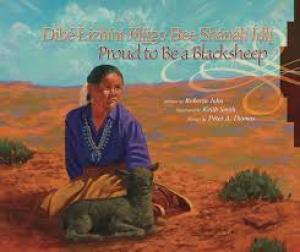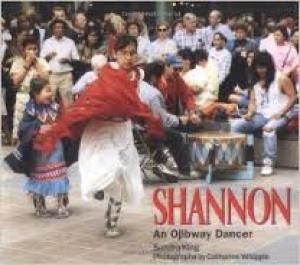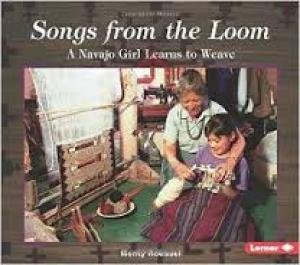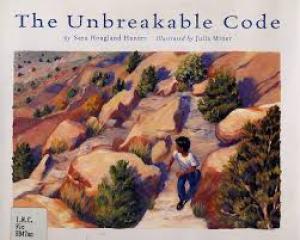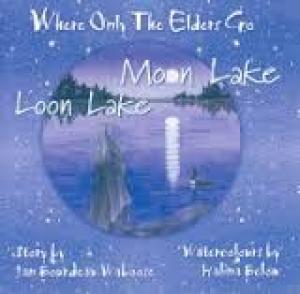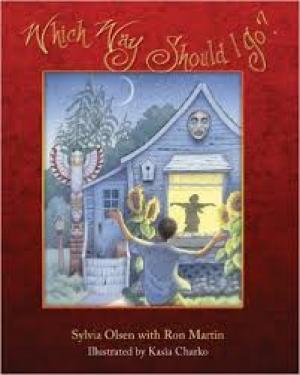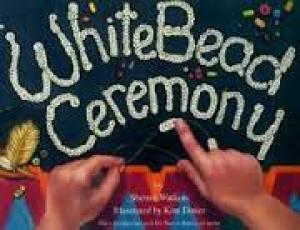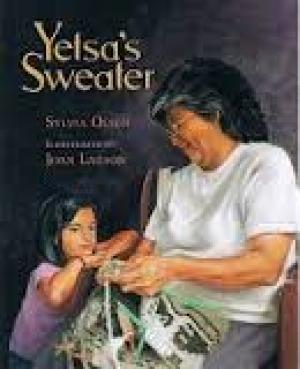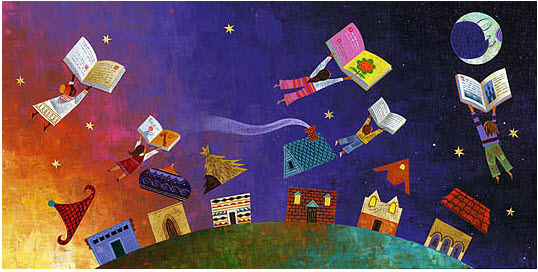Grandparents: American Indian and Alaska Native Heritage
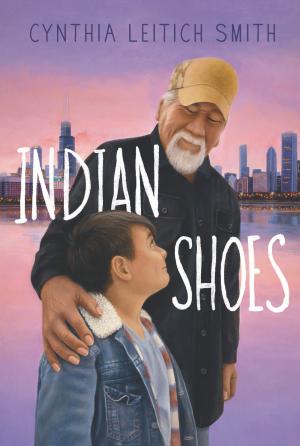
The grandparents in these stories about Native families play different roles — caretaker, stewards of language and culture, and confidante. Some of the titles also address the loss of a beloved grandparent and the legacy they leave behind.
Other Resources
Find more American Indian/Alaska Native (AIAN) titles through:
- Colorín Colorado's AIAN Booklists and Book Finder
- American Indian Youth Literature Award
- Indigenous Reads Rising (We Need Diverse Books)
- Native Children's and Young Adult Books and Resources (Cynthia Leitich Smith)
- American Indians in Children's Literature (Dr. Debbie Reese)
A Day with Yayah
Set in the Nicola Valley, British Columbia, in Canada's westernmost province, a First Nations family goes on an outing to forage for herbs and mushrooms. A grandmother passes down her knowledge of plant life and the natural world to her young grandchildren.
A River Lost
When the Grand Coulee Dam was built, the lives of the Arrow Lakes Tribe were changed forever. Sinee mat and her great-grandmother Toopa tell the story of life on the Columbia River before and after the dam. This important piece of Pacific Northwest history is beautifully illustrated by Virgil Smoker Marchand, a member of the Arrow Lakes Band of the Colville Confederated Tribes.
A Story to Tell: Traditions of a Tlingit Community
"Let's go for a walk," Fran tells her granddaughter, Marissa, "I have a story to tell you." Here, at a family reunion, Marissa visits the Tlingit community of Kake for the first time, meets her many relatives, and learns some of the stories and traditions of the Eagle and Raven clans. — Oyate (We Are Still Here: Native Americans Today)
Doesn't Fall Off His Horse
Product Description: This magnificent true story offers a rare-and breathtaking-look into the life of a Kiowa boy at the end of the nineteenth century. The story is told by a very old man to his youngest great-granddaughter, Saygee, as he shows her one of his treasures: a leopard skin quiver, obtained at great price from the white traders. But there was one time when the quiver could not help him — the time he participated in a daring raid on an enemy tribe.
Grandchildren of the Lakota
In an informal and lively manner, a Lakota grandmother tells about her people, who are part of a larger group frequently referred to as Sioux Indians. The text begins with a brief history of the tribe and then discusses culture and modern life. References to and photographs of various youngsters make the account more personal. — School Library Journal (World's Children)
Grandma's Tipi: A Present-Day Lakota Story
Now that Clara is almost in third grade, she’s finally old enough to spend her first summer away from home visiting her grandma, Unci, and her cousin at their home in Standing Rock Reservation. To welcome her visit, Uncle Louie brings an extra-special surprise in his pickup truck: the tipi that’s been passed down through their family for generations. The girls learn how to stack the poles and wrap the canvas covering around them, how to paint spirit pictures on its walls, and how the circle of the tipi tells its own story, reminding us how to live in the great Circle of Life.
Grandmother's Pigeon
"The mystical and the natural blend superbly in this first children's book by the accomplished literary novelist Louise Erdrich. The eccentric, well-traveled grandmother of two young kids decamps in mid-vacation, riding a porpoise to Greenland and leaving behind a trove of strange treasures and artifacts including a collection of bird's nests and three old eggs which hatch, marvelously, into passenger pigeons.
Green Snake Ceremony (Greyfeather Series)
"An excellent, well-illustrated look at a contemporary Shawnee custom. As four-year-old Mary Greyfeather gets ready to go fishing, her grandfather suggests that it is time to prepare for her green snake ceremony. Afraid of snakes, the girl is not at all sure that she wants to hold one in her mouth in order to gain strength and good luck. When the green snake living under the porch overhears this conversation, he is equally reluctant to end up in a human's mouth…The soft tones of the cartoonlike illustrations enhance the gentle humor of the story." — School Library Journal
Healer of the Water Monster
When Nathan goes to visit his grandma, Nali, at her mobile summer home on the Navajo reservation, he knows he’s in for a pretty uneventful summer, with no electricity or cell service. Still, he loves spending time with Nali and with his uncle Jet, though it’s clear when Jet arrives that he brings his problems with him. One night, while lost in the nearby desert, Nathan finds someone extraordinary: a Holy Being from the Navajo Creation Story — a Water Monster — in need of help. Now Nathan must summon all his courage to save his new friend.
Herizon
Herizon is a book dedicated to the author's nieces with the hope for a more inclusive, empowering future. The story details the journey of a young Diné girl as she helps her grandmother retrieve a flock of sheep aided by a magical scarf. Within the scarf’s powers is the ability to transform, which changes the girl and the world she knows.
High Elk's Treasure
Google Books: Caught in a raging storm, Joe High Elk and his sister, Marie, seek shelter in the cave of their ancestor, Steps High Like an Elk, where they learn their family history and discover High Elk's hundred-year-old forbidden treasure.
Activity Guide available.
Hungry Johnny
"I like to eat, eat, eat," choruses young Johnny as he watches Grandma at work in the kitchen. Wild rice, fried potatoes, fruit salad, frosted sweet rolls — what a feast! Johnny can hardly contain his excitement. In no time, he'll be digging in with everyone else, filling his belly with all this good food. But Johnny has a few more things to do before he can eat. As Johnny watches anxiously, Grandma gently teaches. He understands, just as Grandma does, that gratitude, patience, and respect are rewarded by a place at the table — and plenty to eat, eat, eat.
I Help / Niwechihaw
Product Description: Written and illustrated by members of the Tahltan and Cree nations, this sweet, simple story looks at a very special relationship. A young boy goes for a walk with his kohkom, or grandmother, listening, picking, praying, eating, just as she does. In doing so, he begins to learn the rich cultural traditions and values of his Cree heritage. Bilingual English/Cree.
Indian Shoes
What do Indian shoes look like, anyway? Like beautiful beaded moccasins... or hightops with bright orange shoelaces? Ray Halfmoon, a young Cherokee-Seminole boy living in Chicago with his grandpa, prefers hightops, but he gladly trades them for a nice pair of moccasins for his grandpa. After all, it's Grampa Halfmoon who's always there to help Ray get in and out of scrapes and share a laugh. Award-winning author Cynthia Leitich Smith writes with wit and candor about a boy and his grandfather, sharing all their love, joy, and humor.
Jingle Dancer
Jenna wants to dance in the powwow as her grandmother and other women in her family have. But she wonders: will she have enough jingles to make her dress sing? As Jenna finds a way to collect the jingles she needs, she learns more about her family and the traditions they have upheld across generations. Traditional and contemporary activities come together in this appealing, clearly illustrated story of a modern girl and her background, based on the author's Muscogee (Creek) heritage.
Related VideoCynthia Leitich Smith talks about "Jingle Dancer"Kiki's Journey
Product Description: Like millions of other children who call Los Angeles home, Kiki's a city girl, even if she was born on a reservation. Her parents left the Taos Pueblo long ago, and she hasn't been back since she was a baby. But when she returns with her parents during spring break, Kiki feels like a tourist in a place that should feel like home. An honest look at the challenges and rewards of contemporary American Indian life.
Kunu's Basket: A Story from Indian Island
Product Description: Young Kunu wants to make a pack basket on his own. He's watched his dad and his grandfather make baskets on Indian Island, but now that he's trying to make one for himself, it's not as easy as he thought it would be. Kunu isn't a quitter, but he gets so frustrated that he has to go outside to cool off. When his grandfather asks Kunu to help him with some basket-making tasks, Kunu comes to understand that it is the tradition in his family for one generation to help the next. His grandfather shows him the way, and at last Kunu's first basket is something to celebrate.
Little Voice
Things have been hard for Ray, a young, green-eyed Ojibwe girl, since her father's accidental death. But when she spends the summer with grandmother, who is an elder and a healer, she finds her voice and begins her own process of healing. Set in northern Ontario in the late 1970s, this story from Ojibwe author Ruby Slipperjack speaks to a young girl's coming of age in a thoughtful, quiet way.
Me Too
As he helps his grandfather haul firewood, seven-year-old Jared Martell says, "I want to be like my grandpa." In a photo-essay emphasizing the relationship between grandfather and grandson, Jared shows how his activities (getting ice cubes from the fridge, hunting for something under the bed) parallel the traditional activities Grandpa does in the bush. Bilingual Chipewyan-English. — Oyate
Morning on the Lake
A young Ojibwe boy and his grandfather set out in a birchbark canoe early one spring morning to discover the peaceful beauty of the lake, climb a rocky cliff, and venture into the woods. Under the patient and gentle guidance of his grandfather, the boy gradually comes to respect the ways of nature and to understand his own place in the world.
Nimoshom and His Bus
Nimoshom loved to drive the school bus. Every day, on the way to and from school, he had something to say to the children who rode his bus. Sometimes, he told the kids silly stories. Sometimes, he taught the kids a new word in Cree. Nimoshom and His Bus introduces readers to basic Cree words. A glossary is included in the back of the book.
Nokum Is My Teacher
Nokum Is My Teacher is the poetic story of a young Indigenous boy, posing questions to his grandmother, his "Nokum", about the wider world beyond the familiarity of their home and community. Through a series of questions, Nokum guides her grandson towards an understanding of his need to fit into and learn more about this large world beyond the reserve.
Northern Lights: The Soccer Trails
When Kataujaq's mother dies, her grandmother tells her the legend of the northern lights: the souls of the dead are engaged in a lively game of soccer, just as they did when they were living. Watching the northern lights brings comfort to Kataujaq as she thinks of her mother playing soccer in the sky. A beautiful story honoring Inuit traditions and recommended for children struggling with loss.
Proud to Be a Blacksheep
Product Description: Curious, headstrong, and impatient, Shundeen is a young girl always in search of adventure. As the only Diné (Navajo) in her school, and growing up away from the Diné Reservation, she must retain her culture while surrounded by peers who don't understand it. Every summer, Shundeen lives with her grandparents on the reservation. When a day of adventure culminates in a terrifying accident, Shundeen discovers there is more to herself — and to her people — than she had ever imagined. Bilingual text.
Saltypie: A Choctaw Journey from Darkness into Light
Looking back to his childhood, Choctaw storyteller Tingle introduces his capable, comforting Mawmaw (grandmother); recalls his shock as a six-year-old at realizing that she was blind (possibly, he learns, as a result of a racially motivated assault in her own youth); and recounts a hospital vigil years afterward when she received an eye transplant…A lengthy afterword provides more details about Tingle's family and Choctaw culture, and offers much to think about regarding American Indian stereotypes. — Booklist
Shannon: An Ojibway Dancer (We Are Still Here)
Shannon lives in Minneapolis with her grandmother, sisters, and cousins and is a fancy shawl dancer…A bit of tribal history and culture relevant to the events described, excellent full-color photographs and maps, and further reading lists make these titles essential purchases for school, public, and tribal libraries. — School Library Journal (We Are Still Here: Native Americans Today)
Songs from the Loom: A Navajo Girl Learns to Weave (We Are Still Here)
Reviewer Tracy Robert writes, "Photographer and writer Monty Roessel…documented his ten year old daughter, Jaclyn, as her grandmother taught her to weave. The fifth grader learned about the practical aspects of weaving; like shearing sheep, carding and spinning wool, natural dyes, and weaving techniques. Nali Ruth (Grandmother) also taught Jaclyn about important Diné (Navajo) stories related to weaving and the significance of each tool." (We Are Still Here: Native Americans Today)
The Unbreakable Code
John, a young Diné (Navajo), is frightened to leave his lifelong home on the reservation and move to Minnesota with his mother and new stepfather. The boy's grandfather assures him he'll be all right since he has an "unbreakable code," the Diné language. The man goes on to tell the story of how he and other Dinés were recruited by the Marines and developed a message code based on their native language that helped the U.S. in the Pacific during World War II. — School Library Journal
Where Only the Elders Go: Moon Lake Loon Lake
In this story that will invite a lot of discussion by very young children, a child hears the call of a loon, and it brings him memories of his Mishomis (grandfather), who has gone to "a peaceful, restful place where only the Elders go, Moon Lake Loon Lake." Below's lovely watercolor art complements the story. — Oyate
Which Way Should I Go?
Product Description: Based on the memories of Martin, this story introduces us to Joey, a happy Nuu-chah-nulth boy, eager to help and see the bright side of things. When he loses his beloved grandmother, though, the sun goes out in his world. Slowly, he realizes she has left something of herself behind in an important song, and he chooses to remember her with joy. Teachers Guide available.
White Bead Ceremony (The Greyfeather Series)
"Four-year-old Mary's grandmother decides it's high time that the child receives her Shawnee name, and the task of selecting just the right one is entrusted to the elder women of the family…The book provides a welcome glimpse at how tribal traditions are woven into the fabric of modern-day life." — Publishers Weekly
Wild Berries
In a quietly perceptive story that includes a handful of key words translated into a Cree dialect, a child accompanies his grandmother into an airy, late summer forest to pick wild blueberries. Throughout their excursion, Clarence and his grandmother observe woodland animals, including a spider ("kokom-minakesis") spinning its web, a fox ("makesis"), and birds ("pinesisak").
Yetsa's Sweater
On a fresh spring day, young Yetsa, her mother and her grandmother gather to prepare the sheep fleeces piled in Grandma's yard. As they clean, wash and dry the fleece, laughter and hard work connect the three generations. Through Yetsa's experience of each task, the reader joins this family in an old but vibrant tradition: the creation of Cowichan sweaters by Coast Salish knitters.
Multicultural Literature
See more great related resources and videos in our Multicultural Literature section!

